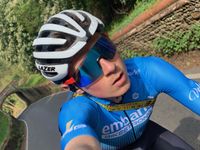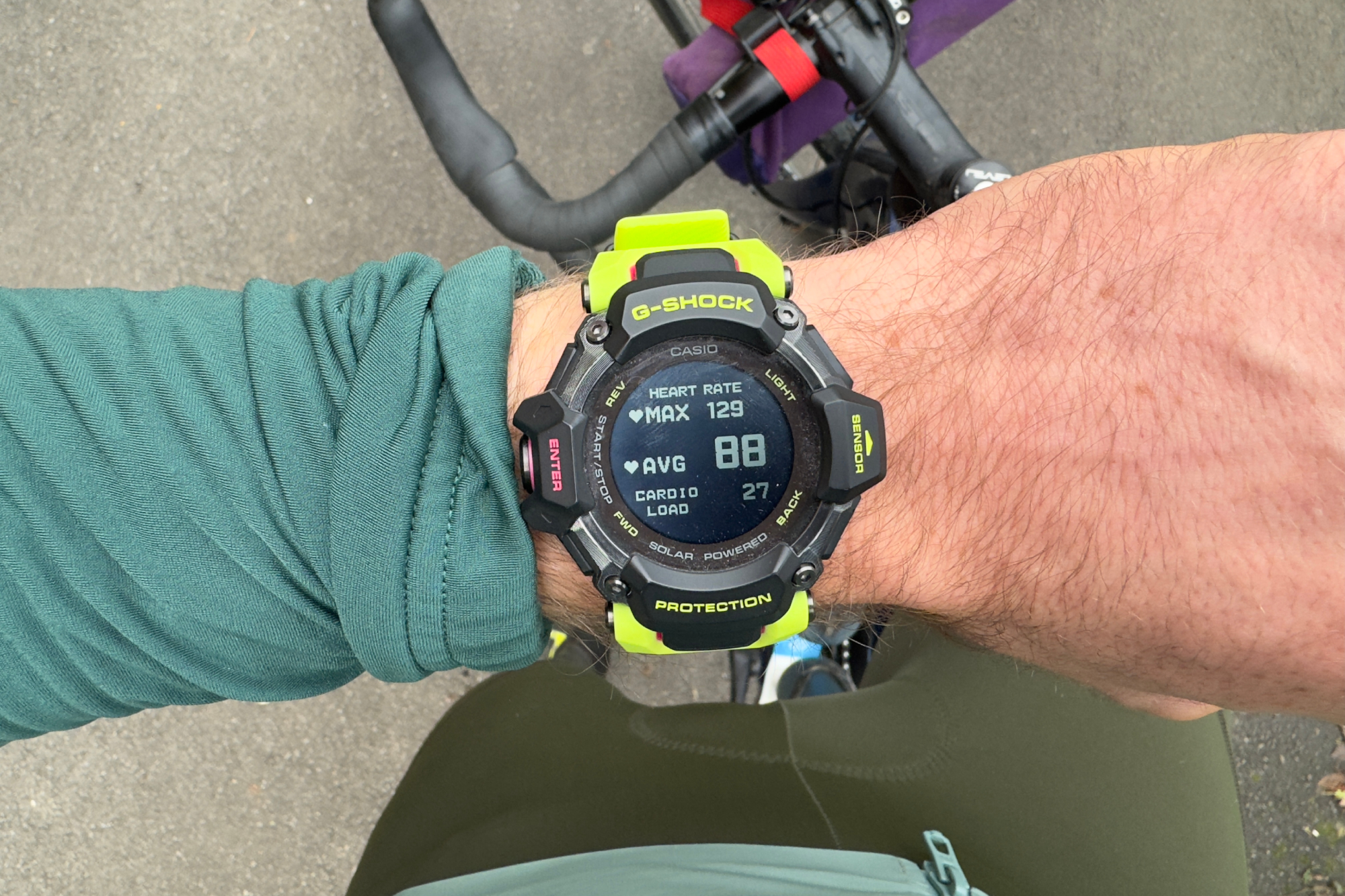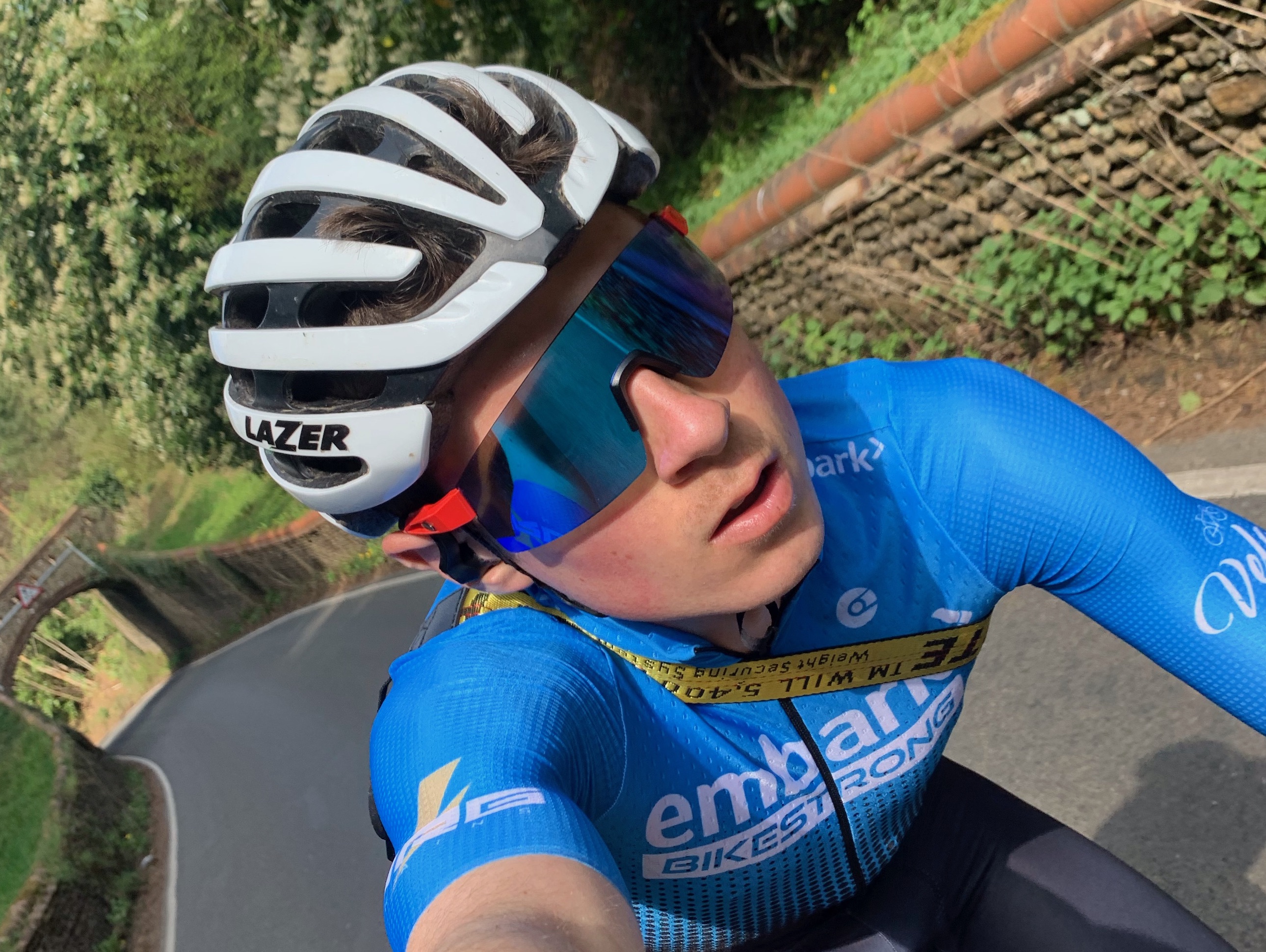G-Shock GBD-H2000 review - super rugged, but lacking in features and overbuilt for cycling
The battery life and GPS tracking were both on point, though

The G-Shock GBD-H2000 is a striking sports watch in its typically bold 'G-Shock design'. The GBD-H2000 goes much further than just tracking rides and other sporting activities, from measuring sleep patterns to tracking your daily steps and heart rate. In a day of age when smart and sports watches are becoming mini-phones on your wrist, the GBD-H2000 does lack a little in some departments. With only a basic selection of activities to choose from and complicated-to-navigate app / watch (no touchscreen here), the general usability is impeded in comparision to its competitors.
-
+
Excellent battery life - up to 19 hours whilst recording GPS
-
+
Extremely accurate GPS data
-
+
Rugged design, helps to protect it from knocks and bangs
-
-
Limited number of activities able to track
-
-
Watch and app are both very hard to navigate
-
-
Not touchscreen
-
-
Bulky design
You can trust Cycling Weekly.

The GBD-H2000 is Casio’s latest attempt to crack the fitness watch industry. Known for their distinguishable, nearly indestructible designs, the G-Shock GBD-H2000 is no exception. Casio looks to enhance the GBD-1000 with this latest design full of sports features such as activity tracking, heart rate and sleep. But how does it stack up against the best smartwatches for cycling?
G-Shock GBD-H2000: construction
The GBD-H2000 is a highly capable watch that has certainly been designed for life in general, rather than only for use in sporting scenarios.
With five buttons to navigate between the pages, one thing I was disappointed by was the fact that there was no touchscreen. At times the buttons were a little unresponsive and made navigating between the pages less than seamless. This was amplified further in the wintery conditions, when wearing thick gloves while cycling.
The GBD-H2000 is not an out-and-out cycling sports watch. In fact, it has the ability to track a host of different activities, from running to walking, swimming and cycling. The range was a little disappointing in comparison to the likes of an Apple Watch, though, which has the ability to track a seemingly infinte range of activies and sports.
The range of widgets found on the watch were, however, impressive. From heart rate and blood oxygen to altimeter measurements as well as, of course, the standard widgets such as time and stopwatches.
Navigating between each of these to measure the likes of your heart rate was a fairly tiring process, though - each time would require navigating off of the main home page and scrolling through the selection of options until you found the one you wanted.
G-Shock GBD-H2000: the ride
The GBD-H2000 keeps the iconic G-Shock design alive. Personally, it is an acquired taste and during testing I did get a lot of comments both positive and negative about the design. After all, the luminous yellow and pink detailing of my test model was not hard to miss.
The latest race content, interviews, features, reviews and expert buying guides, direct to your inbox!
In terms of construction, the GBD-H2000 is not a small watch. At 52mm wide, it was far bigger than the likes of the Garmin and Apple Watches I have previously worn. Plus, at nearly 20mm thick, it certainly protruded prominently from my wrist.
During everyday life this did give a feeling of general overbuilt robustness that made it capable of shrugging off the knocks and bangs that come when wearing something on your wrist 24/7. However, I did find this to be a nuisance whilst out on the bike. When riding on the drops - especially with my winter gear on - I found the watch to be rather uncomfortable, digging into my wrist even as I held a comfortable, slightly aero riding position.
Although the chunky design makes the watch look rather heavy, I was surprised at how light the watch felt, especially on the wrist. At 61g it was lighter than the Apple Watch I own. This is largely thanks to using biomass plastics and a resin strap, although both those elements made the watch feel a little less premium than the stainless steel of the Apple Watch mentioned.
Health and fitness tracking
Of course, the most important aspect of a sports watch is its ability to track fitness activities. I put the watch to the test both through a number of runs on my regular loop and also out on rides. The GPS tracking was nothing short of perfection.
The app gives you a breakdown of all the key statistics from your activity. For instance, distance, time and energy used as well as a map of your route and more details on heart rate zones, percentage of energy used and splits.

The heart rate monitor gave some fairly questionable results. Out on a ride with a few 30-second max sprints, my maximum heart rate only hit 129 bpm whilst the average clocked in at 88 bpm.
Although I sadly did not have a chest based heart rate monitor to compare to, I have used one often enough over the years to know that this reading was far too low. I have found this problem with many wrist-based watches before, and I tend to put this down to the vibrations through the bars causing the watch to move around and not sit quite perfectly on the skin.
Mapping
When it comes to mapping, the GBD-H2000 does not support it. So for those of you looking to import routes or making an attempt to steer clear of getting lost every ride, then this watch is not for you.
Battery life
One of my favorite features of the GBD-H2000 was the built-in solar charging system. Over the course of three weeks testing, I only had to top up the charge once from a power source and even this only took 2.5 hours, which was reasonably fast.
Casio doesn't actually state how long it expects the watch to last - although it does state that when recording GPS activities it will last for up to 19 hours. More than enough for the regular cyclist.
Compared to an Apple Watch, this is far superior. Plus, in the case of the GBD-H2000, the screen is always on - making it even more impressive.
Other features
One thing I would have wished to have seen is the ability to change and customize your watch faces to a greater degree. In fact, I could only find on the app three different set designs which were unable to be changed at all.
Being used to customizing my watch faces to make them unique and personal to me, I did find this a little annoying - however this might not be a big of a deal to other people and may not be what makes the difference between choosing to buy it or not.
A bigger consideration was the app and setting up the watch - a process I found to be far harder than expected. Like all smart watches, the GBD-H2000 has an accompanying app where all of your stats can be found. However, this is where it gets confusing.
Casio has multiple different apps and the G-Shock GBD-H2000 uses the Casio Watches App, rather than the G-Shock app - which to me doesn’t make any sense. Once you have got your head around that, then comes the process of trying to set up your watch - which again is a fiddly process.
The first page on the app is just an advert for the range of G-Shocks, the second page is where you can make customizations to the watch before the third page is where you can find all of your data.

In theory, the data provided from the watch is great: you can track energy used during an activity and what percentage came from carbs vs protein vs fat for instance, as well as sleeping statistics such as time spent in deep sleep. But the fact it is so difficult to navigate between these pages sadly is a big let down.
G-Shock GBD-H2000: value and conclusion
At $399 / £379 the GBD-H2000 is in the middle of the spectrum when it comes to sports watches. Considering that some, such as the Coros Pace 3 cost $229 / £219, whilst the latest Apple Watch Series 9 starts from $399 / £399 I did find the GBD-H2000 overpriced.
Comparing the Apple Watch Series 9 to the GBD-H2000, both clocking in at similar price points, there are some noticeable differences. The Apple Watch, for instance, can make and take phone calls and reply to notifications whilst also having a touchscreen and able to record almost hundreds of different activities. The GBD-H2000 can do none of these things.
In conclusion, I did find the G-Shock GBD-H2000 to leave me a little disappointed. Although the GPS and activity tracking capabilities were great, the use of the watch in a wider everyday life didn’t quite match the competition out there. From the clunky hard to navigate app and watch display itself to the design which I personally found to not be too comfortable whilst cycling.
G-Shock GBD-H2000: specs
- Size: 59.6 × 52.6 × 19.4mm
- Weight: 61g
- Water resistant: Up to 200 metres
- Battery life: GPS up to 19 hours
- Connectivity: Bluetooth

Tom Couzens is a racing cyclist currently representing The Ribble Collective on the road and the Montezumas cyclo-cross team off road. His most notable results include winning the Monmouth GP national series race as a junior; finishing sixth in the 2022 British National Cyclo-cross Championships; and he was selected to represent Great Britain at the European Cyclo-cross Championships in 2020/21. Tom draws on his high-level racing experience and knowledge to help Cycling Weekly readers maximise their potential and get as much as possible out of their riding.